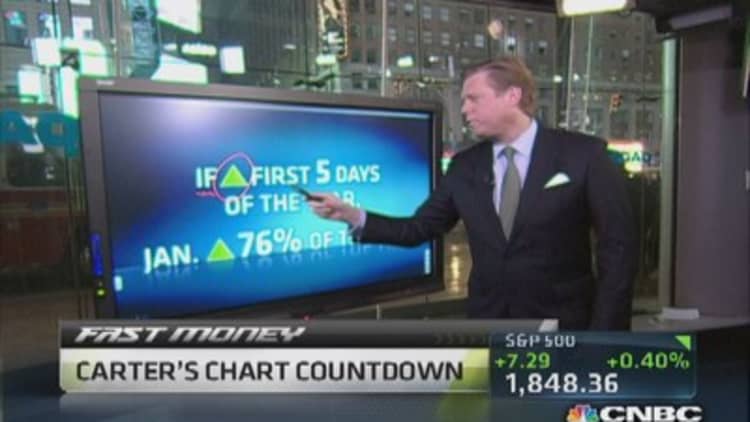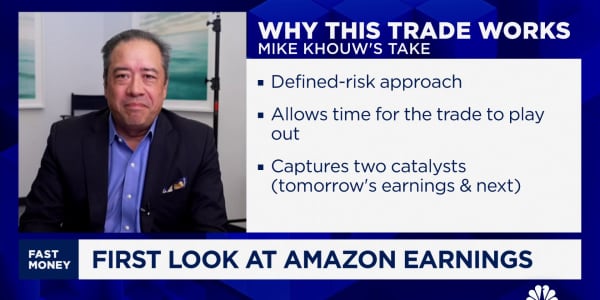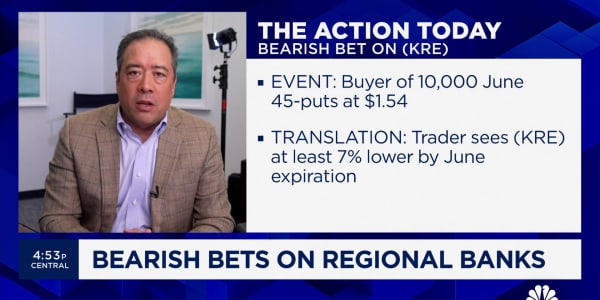Call it the "Hangover Indicator." It turns out that the S&P's performance over the first five trading sessions after New Year's Eve tends to say a great deal about what the rest of the year is likely to bring.
For that reason, if the S&P doesn't close above 1,848 on Wednesday, the market could be in trouble.
In all years going back to 1927, the S&P has risen 57 out of 86 times, for a 66 percent positive record. But if the first five trading days of the year are positive, then the probability of a positive year rises from 64 percent to 77 percent, according to Oppenheimer's chief market technician, Carter Worth.
On the other hand, if the first five trading days of the year are negative (as they are tracking so far) then the chance of a negative year increases from 36 percent to 52 percent.
"It seems too simple to be believed, but the historical facts and figures are what they are," Worth wrote in a Monday note. "The data is the data."
The first-five-day trend is an addendum to the well-known "January Barometer," a theory stating that the S&P's move over the month of January predicts where it will go throughout the remainder of the year. The reason Worth's "Hangover Indicator" works is that the first five days of January tell us a great deal about whether the market will rise over the course of January.
If January is positive, then the chance of a positive year rises from 66 percent to 82 percent. Now, in all cases, the chance of a positive January is 64 percent. But if the first five days are positive, then the probability of a positive January rises to 75 percent.
Thus, it shouldn't be too surprising that the first five days of the year, which do well to predict January performance, would also do well to predict the performance of the entire year.
"There's a very strong correlation between positive January performance and positive full-year performance," Worth writes. "But what really matters, history reveals, is the performance of the first five sessions of January."
(Read more: How to prepare for the first huge number of 2014)

So what could be behind the trend?
"I think the first five trading days do indicate what new money is going to flow into the stock market," said Brian Stutland of the Stutland Volatility Group. "So I think it is a good general description of what the year could look like."
That said, Stutland isn't worried about the small downdraft we've seen in the start of 2014.
"Given that the market rose so much in 2013, for tax reasons, investors were waiting for January to start to sell. And you're seeing a bit of a rebalance of asset allocation, particularly between stocks and gold," Stutland said. "But in general, I think the theory does have some validity."
(Read more: The case for ditching stocks and buying gold in 2014)
For Worth, "the bottom line" is that "one and all will be well served to take note of Monday to Wednesday performance this week."
—By CNBC's Alex Rosenberg. Follow him on Twitter: @CNBCAlex.






